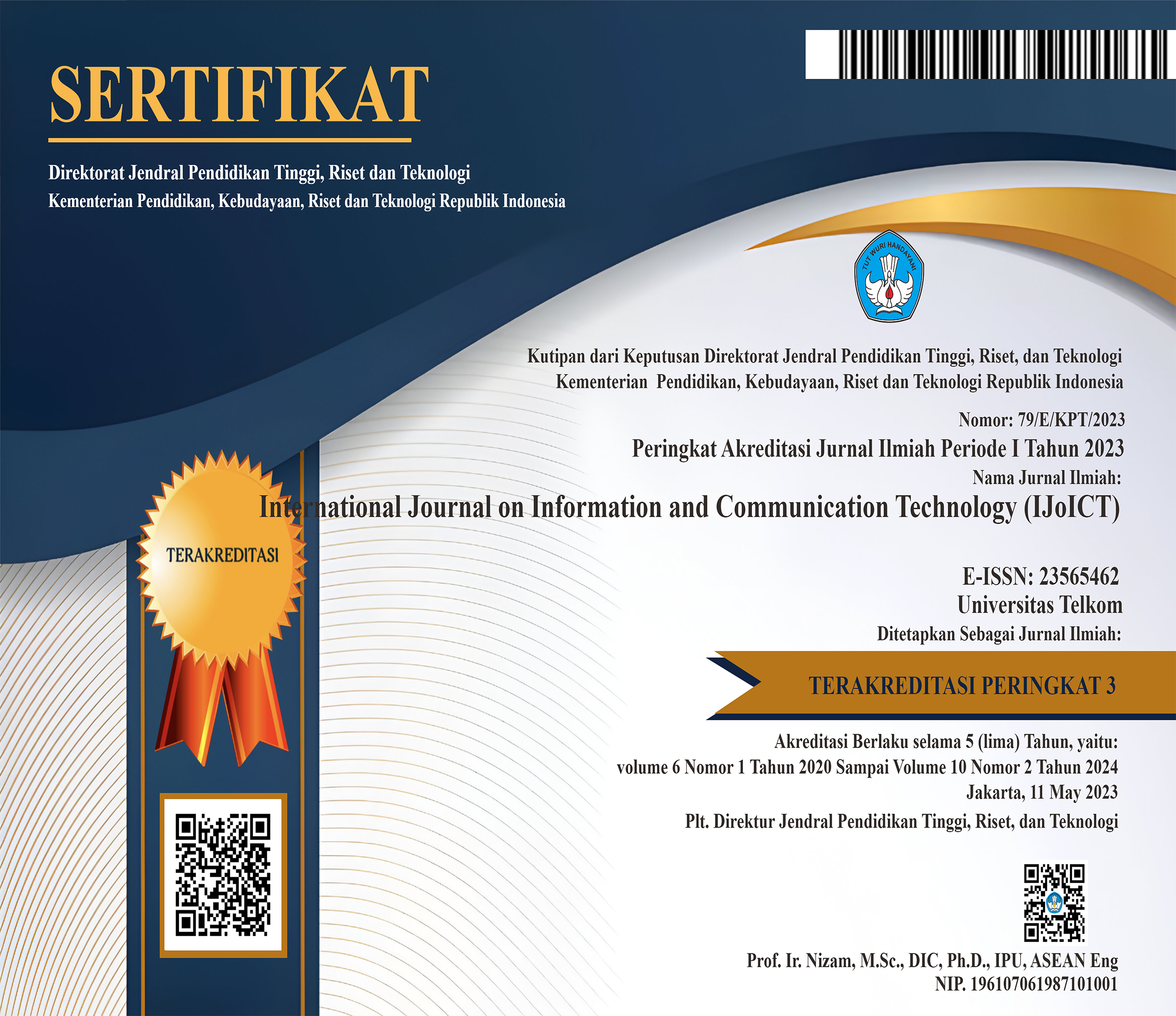Portfolio Optimization Based on Return Prediction and Semi Absolute Deviation (SAD)
 Abstract views: 275
,
Abstract views: 275
,
 pdf downloads: 259
pdf downloads: 259
Abstract
A portfolio is a collection of investment financial assets managed by financial institutions or individuals. In investment activities, investors expect minimal loss risk and optimal stock portfolio weight to get maximum profit. Investors can monitor changes in stock index values to compare portfolio performance. This research has discussed how to build a portfolio based on stock datasets with the LQ45 index using return predictions from the artificial neural network (ANN) method with semi-absolute deviation (SAD). Furthermore, the portfolio is optimized by looking for weights that match it. After that, a comparison of portfolio performance was carried out using the Sharpe ratio (SR) method between the semi-absolute deviation (SAD) portfolio and the portfolio resulting from the formation of the equal weight (EW) portfolio. Portfolio performance with ANN prediction and SAD is better than equal-weight portfolios in terms of mean return, standard deviation, and sharpe ratio for portfolios with few stocks, namely 2 and 3 stocks. In addition, a portfolio with a higher number of stocks can make the portfolio value from the ANN close prediction algorithm process and the selection of weights based on SAD is better than portfolios with equal weight for each list of stocks in the portfolio.
Downloads
References
Selvamuthu, D., Kumar, V., & Mishra, A. (2019). Indian stock market prediction using artificial neural networks on tick data. Financial Innovation, 5(1), 1-12.
Naik, N., Mohan, B.R. (2019). Study of Stock Return Predictions Using Recurrent Neural Networks with LSTM. In: Macintyre, J., Iliadis, L., Maglogiannis, I., Jayne, C. (eds) Engineering Applications of Neural Networks. EANN 2019. Communications in Computer and Information Science, vol 1000. Springer, Cham.
Nametala, C. A., Souza, J. V. D., Pimenta, A., & Carrano, E. G. (2022). Use of Econometric Predictors and Artificial Neural Networks for the Construction of Stock Market Investment Bots. Computational Economics, 1-31.
Suyudi, M. A. D., Djamal, E. C., & Maspupah, A. (2019, August). Prediksi Harga stock menggunakan Metode Recurrent Neural Network. In Seminar Nasional Aplikasi Teknologi Informasi (SNATI).
Saputro, R. N., & Badjra, I. B. (2016). Kinerja portofolio stock berdasarkan strategi investasi momentum pada industri manufaktur (Doctoral dissertation, Udayana University).
Capinski, M., & Zastawniak, T. (2003). Mathematics for Finance: An Introduction to Financial Engineering and Springer.
Mijwil, Maad & Esen, Adam & Alsaadi, Aysar. (2019). Overview of Neural Networks. 1. 2.
Nurachim, R. I. (2019). Pemilihan Model Prediksi Indeks Harga stock Yang Dikembangkan Berdasarkan Algoritma Support Vector Machine (Svm) Atau Multilayer Perceptron (Mlp) Studi Kasus: stock Pt Telekomunikasi Indonesia Tbk. Jurnal Teknologi Informatika dan Komputer, 5(1), 29-35.
Ramchoun, H., Ghanou, Y., Ettouil, M., & Janati Idrissi, M. A. (2016). Multilayer perceptron: Architecture optimization and training.
Anita, P. S., & Riris, P. A. (2021). Risiko Pasar Saham Perbankan Syariah dengan Metode Standar Deviasi Markowitz dan Value At Risk (Var). Jurnal Manajemen (Edisi Elektronik), 12(1), 113-125.
Salim, D. F. (2019). Perancangan Portofolio Optimal Dengan Mengunakan Return On Assets, Return On Equity Dan Economic Value Added Pada Indeks Jakarta Ismaic Index Periode 2014-2018. Jurnal Riset Akuntansi Dan Keuangan, 7(1), 43-54.
Qiu, M., Song, Y., & Akagi, F. (2016). Application of artificial neural network for the prediction of stock market returns: The case of the Japanese stock market. Chaos, Solitons & Fractals, 85, 1-7.
Ma, Y., Han, R., & Wang, W. (2020). Prediction-based portfolio optimization models using deep neural networks. Ieee Access, 8, 115393-115405.

This work is licensed under a Creative Commons Attribution 4.0 International License.
Manuscript submitted to IJoICT has to be an original work of the author(s), contains no element of plagiarism, and has never been published or is not being considered for publication in other journals. Author(s) shall agree to assign all copyright of published article to IJoICT. Requests related to future re-use and re-publication of major or substantial parts of the article must be consulted with the editors of IJoICT.









.png)

.jpg)




